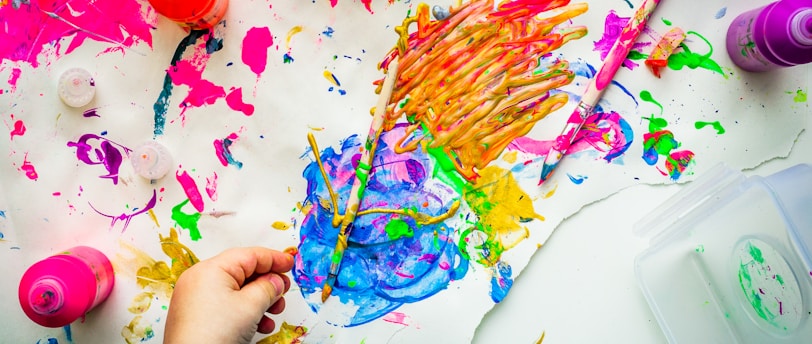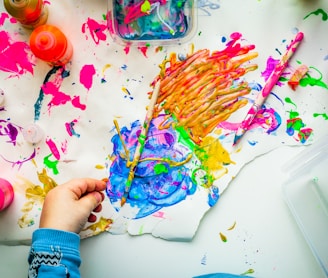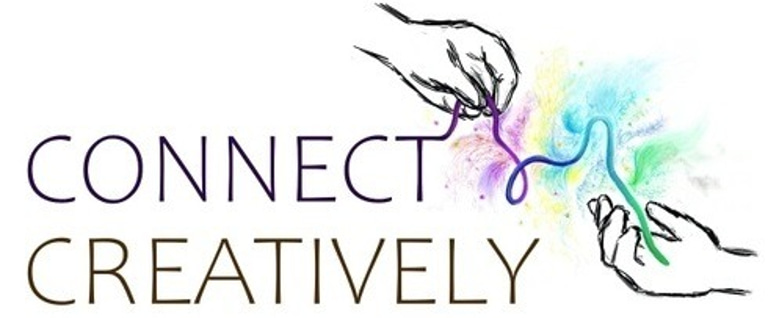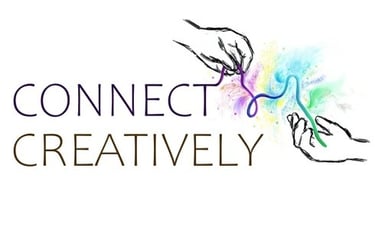What is Art Therapy?
ART THERAPY
Catherine Lau, Registered Art Therapist, RP, RBA(Ont), BCBA
8/9/20233 min read


I had the pleasure to dive into art therapy with Janet Morrison at Catch-Up on Kids Mental Health. Listen to the podcast here:
What is Art Therapy?
Art therapy = creative expression + psychotherapy
Client uses imagery, colours & shapes, to express themselves
Together, the therapist and client work towards the client’s therapy goals, collaboratively, as equals.
A client does not need any art skills to participate in art therapy, simply a willingness to try and explore
The purpose of art therapy is not to get rid of suffering, but to give it a voice. Art is a container in which pain can be borne. To express confusion and pain through art is in itself a transformation, in which one lets go and can face the void. Healing takes place in the restoration of one’s imagination in a safe space between the therapist and client (Levine in Kaufman, 1996)
Who can facilitate art therapy?
Art therapy is facilitated by a professional who has specialized training in both counselling psychology and fine arts. An art therapist must be educated with a minimum of a master's level education in art therapy and must also obtain a minimum number of hours of supervised clinical practice (Canadian Art Therapy Association, 2017).
Art Therapy Focus
A common misconception is that art therapists will analyze art. The therapist does not interpret, rather, a client is the expert of their art and the expert of themselves. They shine light on the meaning of their creations and tell the therapist what they create, what they see. The client and therapist can talk about the art; discuss the process and explore colors, lines, shapes, symbols, and meaning together
Focus of art therapy is on the process of creation, rather than the product (how the creation was made versus how the picture/art looks)
Through the use of creativity and imagination, in playing with materials, one can explore and understand the self.
A client may find healing through the process of creation
The Science and Brain Physiology behind Art Therapy
When we engage in creation and focus on the process, there is increased blood flow to the brain’s prefrontal cortex . The prefrontal cortex controls emotions and motivations. It is also linked to the brain’s reward system, releasing dopamine (the feel good hormone). When dopamine is released, it impacts our physiological well belong (improves blood flow, heart rate, breathing, stress response) as well as psychological well being (Little, 2021).
References:
American Art Therapy Association. (2015). AATA Research Committee Art Therapy Outcome Bibliography. https://arttherapy.org/upload/outcomebibliography researchcmte.pdf
Canadian Art Therapy Association. (2017). What is art therapy. http://www.canadianarttherapy.org/what-is-art-therapy/
Kaufman, A.B. (1996). Art in boxes: An exploration of meanings. The Arts in Psychotherapy, (23), 237-247.
Little, E. M.L., (2021). How the Expressive Therapies Continuum Informs Intermodal Transfers. Expressive Therapies Capstone Theses.


How art therapy can benefit clients
art therapy may help a client process trauma from an event from their past
art therapy may help a client increase self-awareness, develop self-understanding, or explore self-identity
a client can practice grounding and mindfulness practice through creating with different materials
externalize stress, engage in healthy coping strategies
a client may gain psychosocial support within an art therapy group, where clients with a similar goal (i.e. cope with anxiety and stress) can to work through this issue in a safe space; this can decrease social isolation
art therapy can help strengthen positive coping skills, promote a sense of achievement, improve self-esteem
art therapy may helpful for a client who has difficulty expressing themselves through words, for instance, a client with autism spectrum disorder may feel more comfortable using symbols and colours to share their experience
(American Art Therapy Association, 2015)


